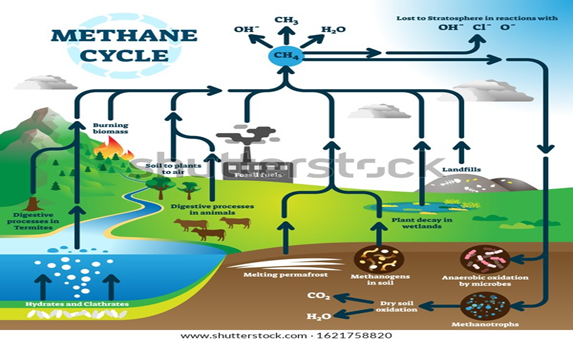

Context
Recently, as per the study by NASA, new lakes are emerging in Alaska due to thawing permafrost and releasing methane, a greenhouse gas into the atmosphere.
Background
- last 50 years or so and is continuously releasing bubbles filled with methane gas.
- Permafrost is ground that stays frozen all year around. In Alaska, the permafrost also contains massive wedges of ice locked within the ground.
- When the ice melts, the ground surface collapses and forms a sinkhole that is filled with water, creating a thermokarst lake.
- These lakes further continue with the methane cycle and releases carbon stocks in the atmosphere.
|
High concentrations of atmospheric methane have been measured at individual Arctic sites, especially in Siberia. This adds to the concern that massive methane releases are already occurring in the far North. NASA's multiyear Carbon in Arctic Reservoirs Vulnerability Experiment (CARVE) is the first experiment to establish emission rates for a large region of the Arctic. |
About
Methane Composition:
|
Features:
|
- Methane is a chemical compound with the molecular formula CH4. It is the main component in natural gas.
- Methane is considered the simplest of alkanes, compounds that consist only of hydrogen (H) and carbon (C) element.
Lakes as a source of Methane
- Natural sources of methane include wetlands, gas hydrates, termites, oceans, freshwater bodies and other sources such as
- Lakes consist of microbes and bacteria which tend to decompose the organic matter present in inside the water body.
How the lakes are responsible for emitting Methane?
- Frozen lakes in Alaska, normally contains microbes which due to thawing effect.
- After a few years, this methane releases when ice got melted. The phenomenon takes place in young water bodies.
- As young water bodies contains more matter to decompose in comparison to older lakes.
- The methane bubbles emerging from these newly formed lakes are caused by microbial activity.
- The microbes digest the dead plants and organic matter in the previously frozen ground, which produces carbon dioxide and methane.
Why Methane emission is a cause of concern?
- Methane is the primary contributor to the formation of ground-level ozone, a hazardous air pollutant.
- A powerful greenhouse gas, it is 80 times more potent at warming than carbon dioxide.
- Methane is responsible for 30% of the rise in global temperatures since the industrial revolution.
- Arctic consists of large number of such lakes which emits methane into the atmosphere.


